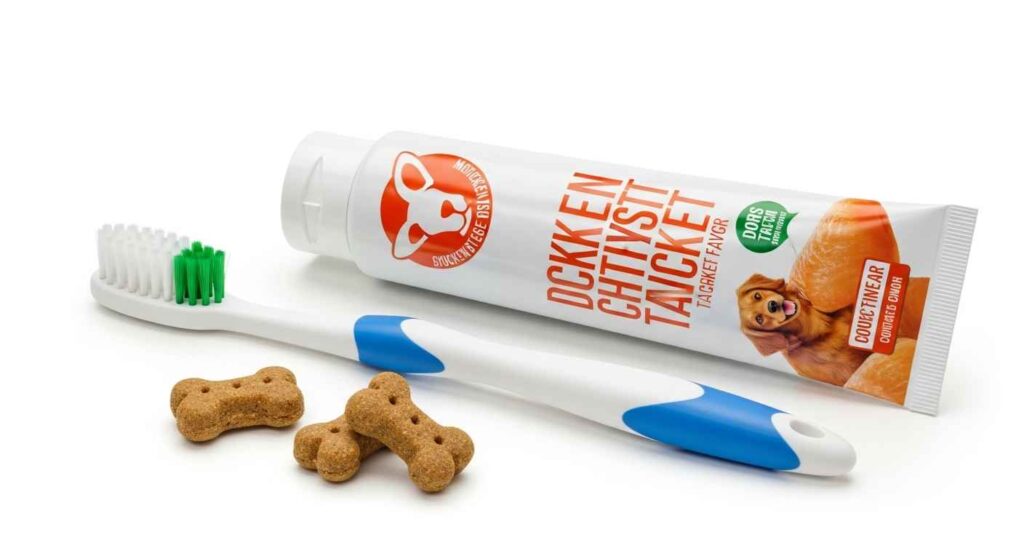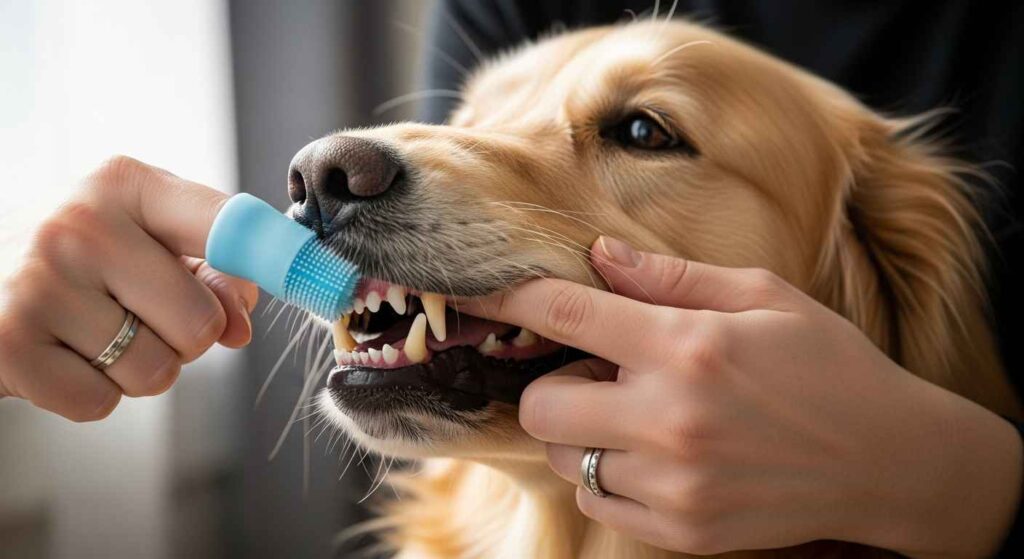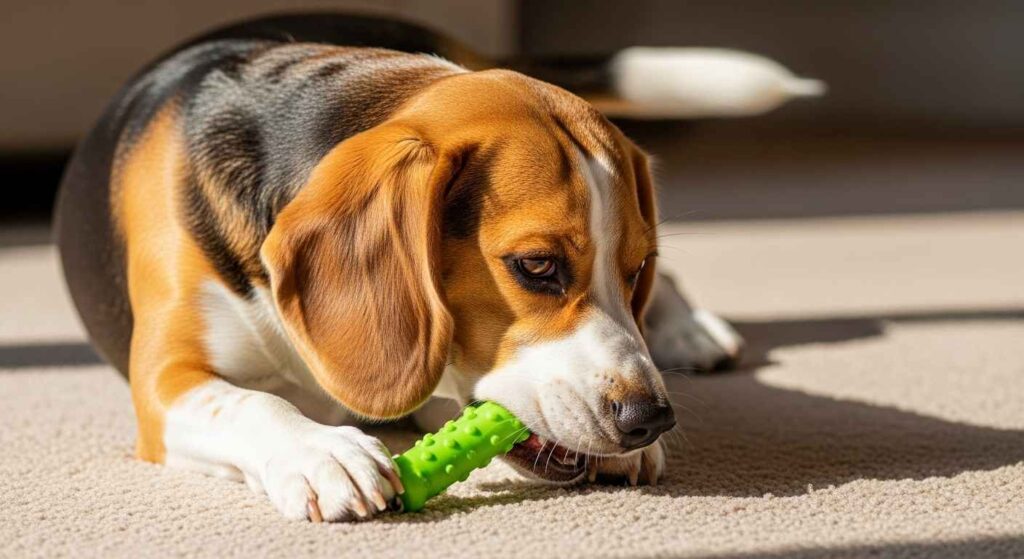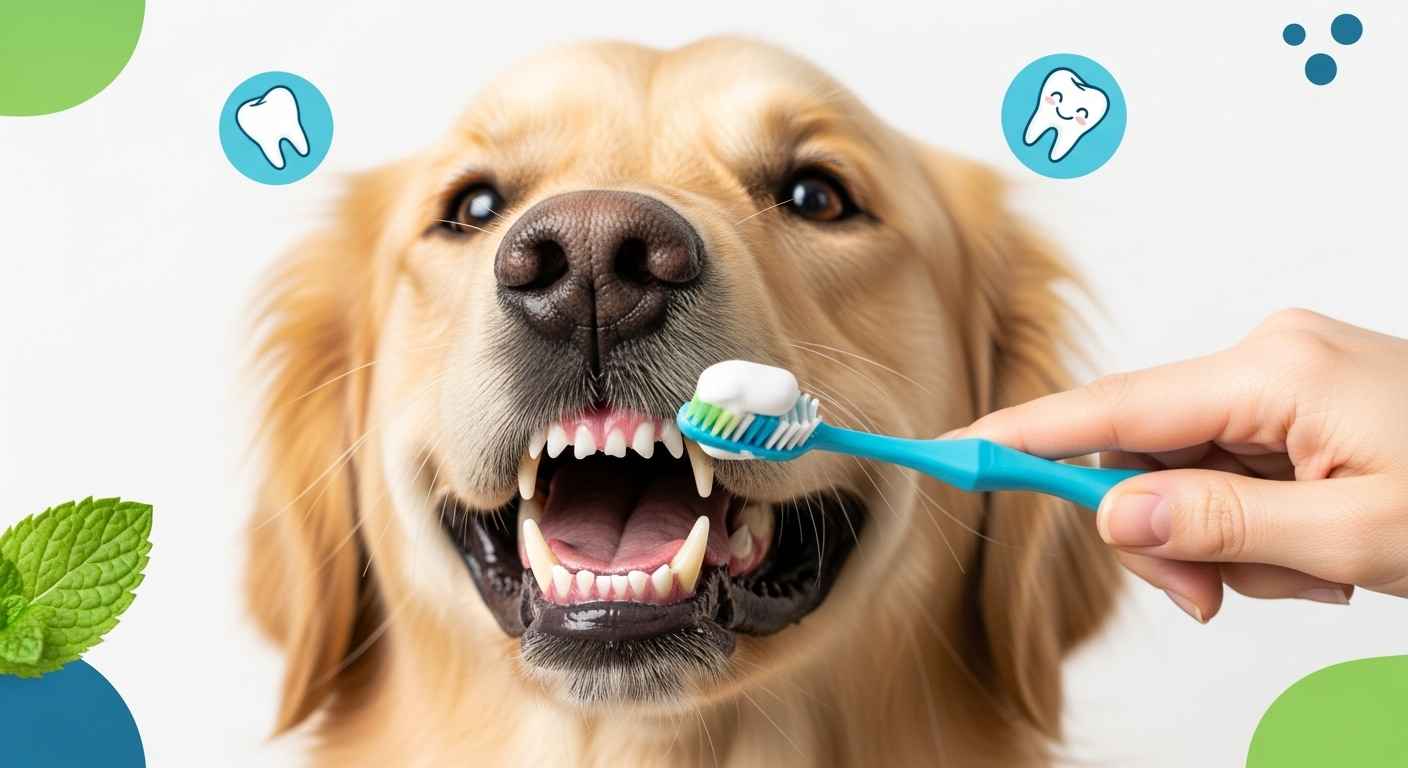Brushing your dog’s teeth keeps their mouth healthy. It removes plaque that causes bad breath and gum problems. Most dogs over three years old face dental issues. Regular brushing helps avoid these. It also cuts down on vet visits for cleanings. Start this habit early for best results.
Why Brush Your Dog’s Teeth?
Dogs build up plaque fast. This turns into tartar in a day. Tartar leads to gum disease. Gum disease can cause pain and tooth loss. Bacteria from the mouth may spread to the heart, liver, or kidneys. Brushing stops this early. It freshens breath too. Clean teeth mean a happier dog. Dogs have 42 adult teeth. Learn more about them in our post on how many teeth do dogs have.
Tools You Need
Gather these items before you start. Use products made for dogs.
- Dog toothpaste: Pick flavors like chicken or beef. Avoid human toothpaste. It has harmful parts like fluoride.
- Toothbrush: Get a soft one for dogs. Finger brushes work well for small breeds.
- Treats: Use them as rewards.
- Gauze or cloth: For beginners.
Look for items approved by the Veterinary Oral Health Council at vohc.org.

Step-by-Step Guide
Go slow at first. Make it fun with praise and treats. Some dogs take weeks to get used to it.
Get Your Dog Ready
Pick a quiet spot. Sit with your dog. Let them sniff the tools. Rub your finger on their gums. Do this for a few days. Add toothpaste to your finger next. Let them lick it. This builds trust.
Do the Brushing
- Put toothpaste on the brush.
- Lift the top lip gently.
- Hold the brush at a 45-degree angle to the gums.
- Move in small circles or back and forth.
- Focus on outer sides of teeth. Skip insides if hard.
- Brush front, sides, and back teeth.
- Do bottom teeth the same way.
- Spend 30 seconds per side.
Stop if your dog gets upset. Try again later.

How Often to Brush
Brush every day if you can. Aim for at least three times a week. Plaque hardens quickly. Daily brushing keeps it off best. Fit it into your routine after walks or meals.
Tips for Success
Use positive words and pets. Reward right after. Start young with puppies. For older dogs, be patient. If your dog shakes or has bad breath, check our pet symptom checker. Avoid common mistakes like using wrong paste. See our list of common dog owner mistakes.
Wash your hands after. Replace the brush every three months. If your dog won’t cooperate, use gauze wrapped on your finger.
Other Ways to Clean Teeth
Not all dogs like brushing. Try these options.
- Dental chews: Give one daily. Pick approved ones.
- Water additives: Mix into drinking water.
- Chew toys: They scrape off plaque.
- Dental treats: Check safety with our pet food safety checker.
These help but don’t replace brushing. Combine them for better results.

Suggest an image here for alternatives.
When to See a Vet
Watch for red gums, bleeding, or loose teeth. Bad breath that lasts means trouble. Get a pro cleaning under anesthesia if tartar builds up. Vets check teeth yearly. Don’t wait for pain. Early care saves money and stress.
Answers to Common Questions
How do I know if my dog has dental problems? Look for drooling or pawing at the mouth.
Can I use baking soda? No. It upsets the stomach.
What if my dog hates water? That’s common, but not linked to brushing. Read why some pets avoid it in why do cats hate water.
Is brushing safe for all breeds? Yes, but small dogs need extra care. Use our pet breed finder quiz to learn about your dog’s needs.
For grooming tips, check how to groom your dog at home. If you wonder about safe fruits, see what fruits can dogs eat.
